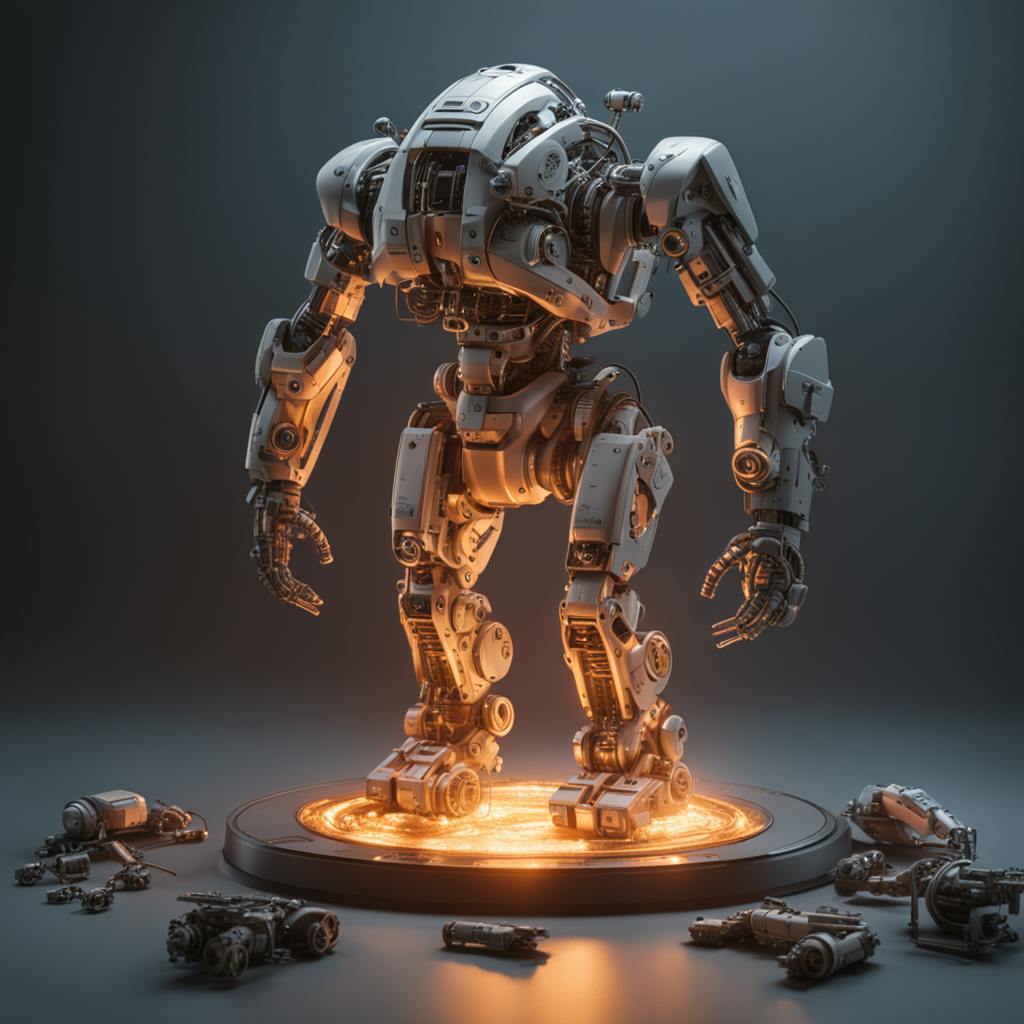Augmented Reality (AR) continues to redefine the way we interact with technology, and one impressive example that showcases the potential of AR is the Microsoft HoloLens. This cutting-edge device exemplifies how AR can transform everyday experiences by seamlessly blending digital elements with our physical world. In this article, we will explore the features, applications, and future impact of the HoloLens as a prominent example of AR technology in action.
The Power of Microsoft HoloLens
Understanding of AR Through HoloLens
The Microsoft HoloLens is a head-mounted display unit that overlays digital content onto the real world, enabling users to engage with holograms within their physical environment. Unlike Virtual Reality (VR), which immerses users in a completely virtual space, AR enhances the real world by adding virtual components to it. This difference is crucial for understanding the broader applications of AR technology.
Exploration of HoloLens Features
HoloLens stands out in the AR market due to its dynamic features:
- Spatial Mapping: HoloLens maps the user's surroundings, allowing digital objects to interact with real-world elements seamlessly.
- Gesture Recognition: Users can manipulate and interact with digital content using intuitive hand gestures, making it a versatile tool in various sectors.
- Voice Commands: Integrated with Microsoft’s Cortana, HoloLens allows users to control applications with simple voice commands, enhancing accessibility and usability.
Applications Across Various Industries
HoloLens has made significant strides in several fields, establishing itself as a transformative example of augmented reality:
- Healthcare: Doctors use HoloLens for surgical planning and visualization, enhancing accuracy and reducing patient risk. Medical students also benefit from hands-on learning experiences without the need for physical cadavers.
- Education: Educators can bring lessons to life by overlaying historical events or complex scientific concepts onto the classroom environment, fostering deeper engagement and understanding among students.
- Architecture and Design: Architects and designers can create and modify 3D models in real time, visualizing how proposed structures will integrate into existing spaces.
- Gaming and Entertainment: HoloLens brings a new dimension to gaming by integrating digital gameplay into the user’s physical space, creating immersive experiences that are both entertaining and interactive.

AI made with Christophe Vacher
Backed by Industry Adoption
Microsoft's HoloLens has been widely adopted by various industries, reinforcing its credibility as a leader in augmented reality innovation. Companies like NASA, Trimble, and Volvo have integrated HoloLens into their operations, demonstrating its versatility and effectiveness.
Addressing Frequently Asked Questions
What sets HoloLens apart from other AR devices?
HoloLens is distinctive due to its ability to map the physical environment and its intuitive interface that combines gestures, voice commands, and spatial recognition technology. This enhances its adaptability across diverse applications, from professional to personal use.
Who can benefit from using the HoloLens?
While technology enthusiasts may delight in its gaming capabilities, professionals in industries such as healthcare, education, and architecture can significantly benefit from its practical applications, improving productivity and innovation within their fields.
How does HoloLens contribute to future AR developments?
As a pioneer in AR technology, HoloLens continues to set the benchmark for future developments. Its success spurs innovation, encouraging further advancements and applications within the AR landscape.
FAQ on Augmented Reality (AR) in Practice
Augmented Reality (AR) is rapidly evolving, reshaping how we interact with the digital and physical worlds. Below are detailed insights into some of the most notable applications and demonstrations of AR technology.
What is a notable example of augmented reality in use?
One of the most renowned examples of augmented reality is the mobile game Pokémon GO. Launched by Niantic in 2016, Pokémon GO overlays digital characters onto the real world through a smartphone’s camera. Players traverse their physical environment, discovering and capturing virtual Pokémon that appear superimposed over real-world locations. This innovative use of AR brought AR technology into the mainstream, demonstrating its potential to offer compelling and interactive user experiences.
Can you describe an impressive demonstration of augmented reality?
An impressive demonstration of AR can be seen in the Microsoft HoloLens platform. A notable demonstration includes visualizing and manipulating 3D holographic models. For instance, in architectural design meetings, architects and clients can utilize HoloLens to walk through a building before construction. Users can collaborate in real-time, manipulate the models directly, and make adjustments on the fly. This capability provides a highly immersive experience where stakeholders can interact with digital content in a tactile manner, enhancing both understanding and communication.
How is augmented reality being used innovatively in the real world?
AR is being utilized innovatively across various sectors beyond entertainment:
- Retail: IKEA's AR app, IKEA Place, allows customers to visualize furniture in their homes to scale before making a purchase. This assists in visualizing how products fit within a space, reducing uncertainty and enhancing the shopping experience
- Education: Apps like AR Anatomy leverage AR to provide students with interactive, 3D models of human anatomy. This offers an engaging and practical learning tool that can simplify complex concepts through visual representation.
- Healthcare: AccuVein employs AR to improve the accuracy of finding veins during procedures such as blood draws. By projecting a map of a patient’s veins onto their skin, practitioners can significantly reduce the time and discomfort associated with missed attempts.
- Automotive Industry: Brands like Mercedes-Benz use AR in heads-up displays (HUD) to provide drivers with real-time information projected onto the windshield. This includes navigation details, speed limits, and hazard warnings, enhancing driving safety and convenience.

AI made with Christophe Vacher
What outcomes are achieved from the example of augmented reality in action?
The applications of AR bring about several transformative outcomes:
- Enhanced User Engagement: Through interactive content, users are more engaged and interactive experiences can increase customer satisfaction and retention.
- Improved Decision Making: AR applications enable better decision-making through accurate visualizations and simulations, especially in fields such as architecture and retail.
- Educational Benefits: By providing immersive learning experiences, AR can improve knowledge retention and understanding, making complex subjects more accessible.
- Increased Efficiency: In healthcare and similar fields, precise AR applications reduce errors and improve efficiency, leading to better overall outcomes and cost savings.
- Novel Marketing Opportunities: AR creates unique marketing opportunities that can differentiate brands and create memorable consumer experiences.
Overall, augmented reality demonstrates immense potential to transform numerous industries by merging digital content with the physical world, enhancing user interaction, and providing valuable insights and efficiencies. As technology advances, we are likely to see even more innovative AR applications emerge.
Conclusion
The Microsoft HoloLens is a prime example of how augmented reality is changing the landscape of technology, making what was once considered futuristic now a part of our everyday lives. By allowing users to interact with digital and physical elements simultaneously, HoloLens is not just an impressive example of augmented reality in action but also a harbinger of future technological possibilities. Whether in education, healthcare, or entertainment, the HoloLens highlights the endless potential and practicality of AR technologies, promising a future where the line between digital and reality continues to blur excitingly.

